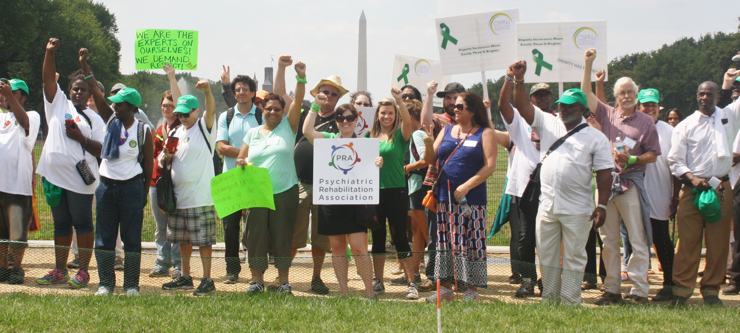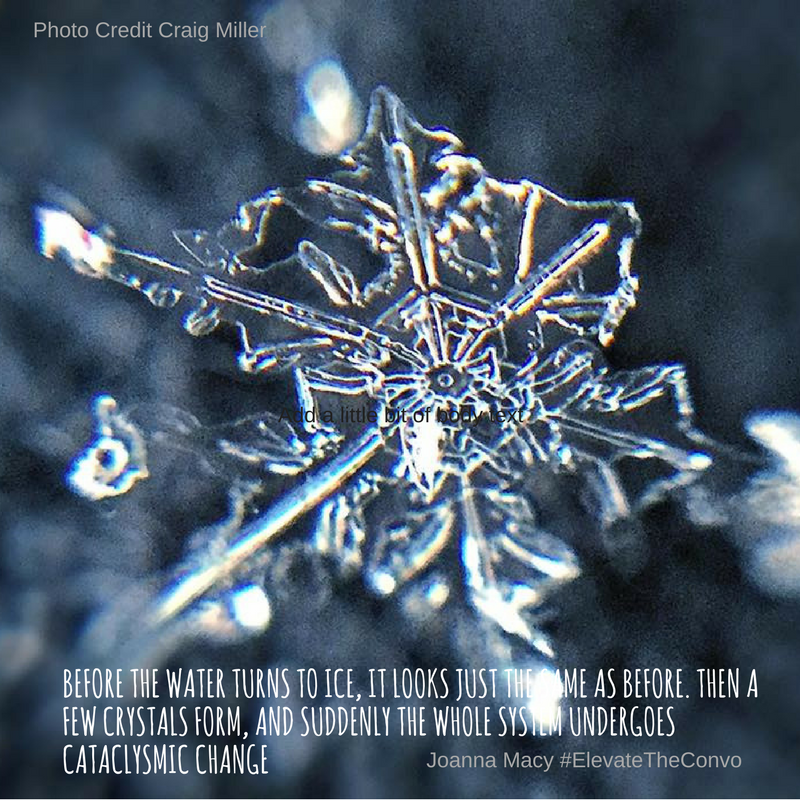A new social movement is emerging, and it’s gaining momentum. As I speak at conferences, in workplaces and communities around the world, I find that audiences first tilt their heads with intrigue and then nod with enthusiasm as I explain what it means to position suicide prevention as a social justice issue.
For decades suicide has been primarily understood to be the consequence of a mental health issue. Authorities have long reported that an estimated 90% of people who die of suicide experience some diagnosable mental health condition or substance use disorder. We know for many that the right treatment can save lives. However, if we only view suicide through the mental health lens, we will be very limited in our ability to create systematic change. In fact, might be missing true opportunities that are driving the despair when we are only focused on what is going on at the individual level. When we look at suicide prevention through this limited lens, the main change agents are the mental health service providers, who work with individuals – at least those who make it into their services; one-on-one, one at a time.
In order to take a more “upstream” approach to this, we need to think more broadly and conceptualize suicide prevention as a public health issue. When we view suicide through this lens, we can plainly see that many systems are involved in creating change – schools, workplaces, healthcare systems, justice, faith communities and more. Everyone can play a role in suicide prevention. We can also learn to appreciate that change begins through an emphasis on bolstering protective factors like social connections and resilience as much as it does on medication and treatment. Furthermore, the public health approach helps us consider environmental sources of change like how best to reduce access to lethal means and how to help journalists report safely on suicide.
But, I would argue, even this perspective falls short. Because if you haven’t been touched by suicide directly, you are usually unaware of its widespread and devastating impact, and therefore less inclined to allocate your energy toward targeting this particular health issue over others. What is needed is a social justice approach to suicide prevention. We can take notes from the breast cancer movement that has modeled for us how to create a tipping point of change by bringing the strength of community solidarity to engage a wider circle. Breast cancer survivors are bolstered by others who respect their courage and stand with them in dignity through their life-and-death battle. Those who have lost their fight to breast cancer are remembered with honor. Many who have not been touched by the impact of breast cancer are moved by the energy of the large scale support and moving testimonies of healing and recovery. People all over – even our NFL players -- want to know how they can help.
In our 2012 article “Tracking a Movement: U.S. Milestones in Suicide Prevention” (Spencer-Thomas & Jahn), we outlined the shifts that occur at various levels or an emerging social movement. On the personal level, internal changes such as attitudes and beliefs, aspirations transform behavioral change. Within communities, shifts language occur with social pressure to accept or reject collective perspectives. As movement mature, institutional changes manifest in reconstructed structure and function. Finally, cultural shifts occur when universal systems like education, religion, and politics start embrace sweeping and lasting change.
We argued that these changes are taking shape within the suicide prevention movement. As the movement has progressed we see increased self-reflection (especially around the aspirational goal of “zero suicide”); we see our language starting to shift (with implementation of safe and effective messaging”; we see policies challenged (like how we respond to people in crisis). Now it’s time to engage a wider circle.
So what are the aspects of injustice we need to fight against in suicide prevention and mental health promotion? For one, we have a grave imbalance in the way we treat mental health conditions and the way we treat other physical disorders. Because of this imbalance, people with mental health conditions often have a terrible time accessing adequate care. There are too few mental health treatment options and most of them are too costly for the average person. As my colleague Dr. Doug Johnson once said to me, “We have a psycho-social injustice problem. We have Americanized mental illness – by looking for quick fixes and ignoring the emotional impact of marginalization.”
In addition, we have developed dysfunctional narratives in our country about mental health conditions that get reinforced in careless media reports and lead to further isolation and hopelessness. Discrimination, prejudice, myths and information perpetrate fear and judgment. People are genuinely afraid to reach out to get the help they need to survive – if that is not a social justice issue, I do not know what is.
The World Health Organization has defining mental advocacy as “The concept of mental health advocacy has been developed to promote the human rights of persons with mental disorders and to reduce stigma and discrimination. It consists of various actions aimed at changing the major structural and attitudinal barriers to achieving positive mental health outcomes in populations.”[1]
When people become marginalized for whatever reason, they are often told that their experiences do not matter. Advocacy allows those who have suffered to publicly state, “This is who I am, this is how the dreams of mine and others like me have been systematically destroyed.”
Advocates can also paint a vision by saying, “This is how I see that change is possible.”
What do suicide prevention advocates do? Organized empowerment.
Give a voice to those who have been silenced. Specifically, to our suicide attempt survivors and suicide loss survivors. By sharing stories of hope, we move hearts and create a roadmap to recovery. One project that does this well is the Live through This project. Founder Dese’Rae Stage takes portraits of suicide attempt survivors and records interviews with them about their journeys.
Mobilize bystanders and connect populations. There is great suicide prevention advocacy effort within the construction industry. Because their rate of suicide is so high, they are making suicide prevention a health and safety priority by getting organized through the Construction Industry Alliance for Suicide Prevention. We need to do this in more communities, in more high-risk populations.
Stand in solidarity. The American Foundation for Suicide Prevention coordinates hundreds of “Out of the Darkness” walks across the nation. Thousands pull together and walk to remember loved ones lost to suicide.
Build momentum. This year, national partners in suicide prevention like the National Action Alliance for Suicide Prevention, the American Association of Suicidology and the National Suicide Prevention Lifeline are uniting around a single message for National Suicide Prevention Week: #BeThere. This coordination of a single call-to-action helps build support and momentum.
Act against injustice. Suicide prevention advocates can help shift discrimination and champion policies through legislative action. For example, we can testify before our legislators about the need for better suicide intervention training for mental health providers. The American Foundation for Suicide Prevention offers tools to help.
Together we can change the hearts and minds. We can testify before our legislators. We can engage media in positive stories of hope and recovery. We can appreciate the intersectionality of our identities. We can look at trauma and oppression as causes of despair in addition to brain science. We can pull people together to rally around a brighter future.
Being a suicide prevention advocate is hard work. Cynicism, frustration, disappointment and backlash all come with the territory.
But here is the good news: being involved in social movements that matter builds resiliency in the soul
So in closing, never give up. The tipping point is near. As eco-psychologist Joanna Macy once said, “Before the water turns to ice, it looks just the same as before. Then a few crystals form, and suddenly the whole system undergoes cataclysmic change.”
About the Author
Sally Spencer-Thomas is a clinical psychologist, inspirational international speaker and an impact entrepreneur. Dr. Spencer-Thomas was moved to work in suicide prevention after her younger brother, a Denver entrepreneur, died of suicide after a difficult battle with bipolar condition. Known nationally and internationally as an innovator in social change, Spencer-Thomas has helped start up multiple large-scale, gap filling efforts in mental health including the award-winning campaign Man Therapy and the nation’s first workplace suicide prevention initiative. Because of these efforts, she was an invited speaker at the White House in 2015.
Her goal is to elevate the conversation and make suicide prevention a health and safety priority in our schools, workplaces and communities. Spencer-Thomas has also held leadership positions for the National Action Alliance for Suicide Prevention, the International Association for Suicide Prevention, the American Association for Suicidology, and the National Suicide Prevention Lifeline. She has won multiple awards for her advocacy including the 2014 Survivor of the Year from the American Association of Suicidology, the 2014 Invisible Disabilities Association Impact Honors Award, and the 2012 Alumni Master Scholar from the University of Denver, the 2015 Farbarow Award from the International Association for Suicide Prevention and the 2016 Career Achievement Alumni Award from the University of Denver’s Graduate School of Professional Psychology.
She has a Doctorate in Clinical Psychology from the University of Denver, Masters in Non-profit Management from Regis University, a Bachelors in Psychology and Studio Art with a Minor in Economics from Bowdoin College. She has written four books on mental health and violence prevention. She lives with her partner and three sons in Conifer, Colorado.
Connect with Dr. Spencer-Thomas by visiting her website: www.SallySpencerThomas.com and following her on Facebook @DrSallySpeaks, Twitter @sspencerthomas and LinkedIn. To learn more participate in her monthly podcasts, blogs and twitter chats!
[1] World Health Organization (2003). Advocacy and Mental Health, Volume 7. Geneva, Switzerland. WHO.
Spencer-Thomas, S. & Jahn, D. (2012). Tracking a movement: U.S. milestones in suicide prevention. Suicide and Life Threatening Behavior, 42(1), 78-85.
NOTE: Feel free to use the graphic below in your own post. All I ask is that you link back to this article or my website: www.SallySpencerThomas.com Thank you!





